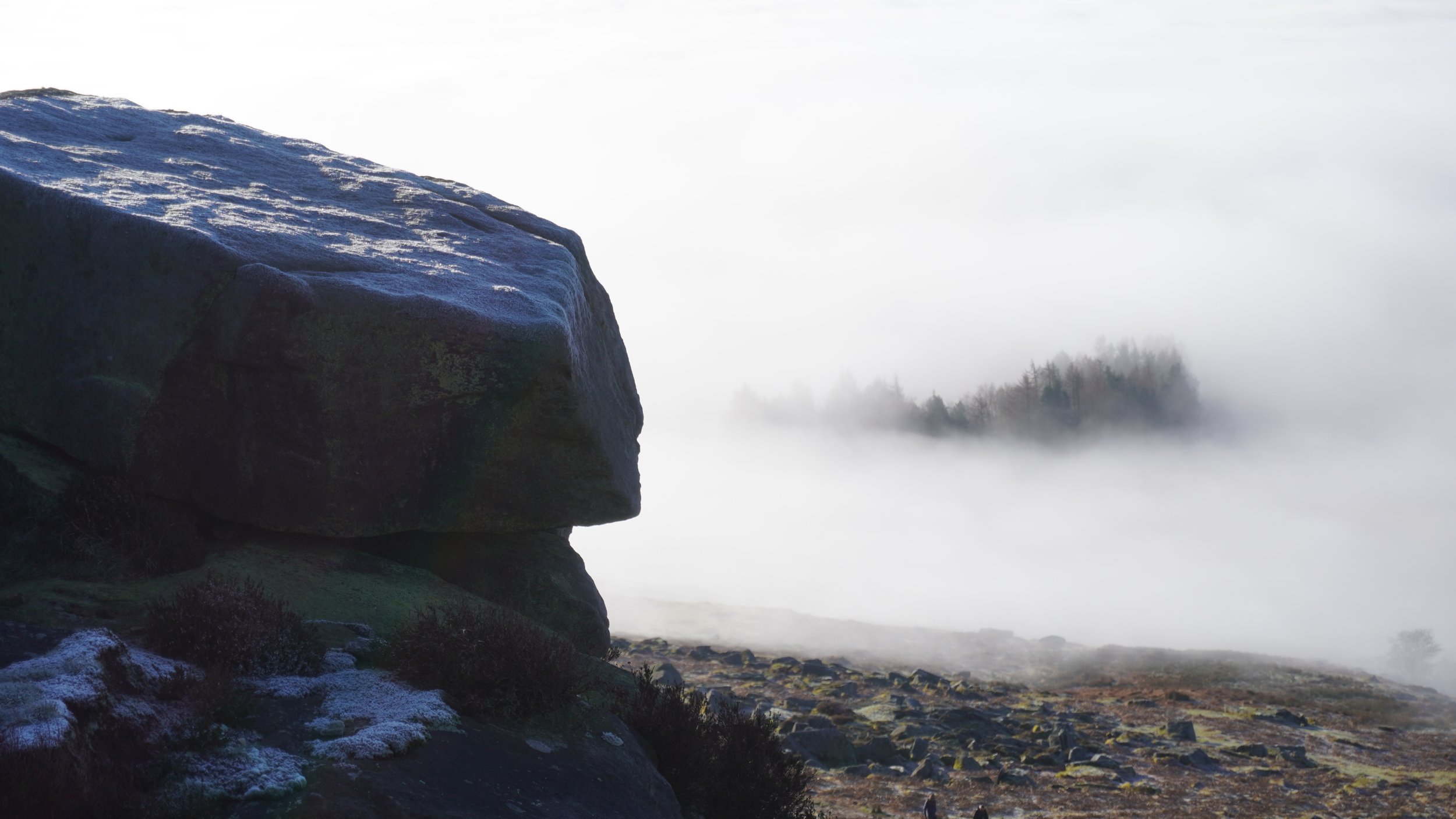How to catch a cloud inversion — The ultimate guide
Imagine waking up to a surreal landscape where clouds blanket the valleys below, creating a breathtaking sight known as a cloud inversion. Cloud inversions, sometimes called temperature inversions, occur when a layer of warm air traps cooler air beneath it, resulting in clouds forming in the lower atmosphere.
What is an inversion?
Cloud inversions typically occur during the cooler months when the ground cools rapidly after sunset. As the air near the ground cools, it becomes denser and sinks, while warmer air aloft remains trapped above it. This temperature inversion leads to the formation of clouds in the lower atmosphere, often creating stunning visual displays. The phrase ‘cloud inversion’ is somewhat of a nickname. The correct terminology of the misty landscape you see from a vantage point is a temperature inversion.
A tell-tale sign of a temperature inversion is to look out for smoke from a chimney because it will rise to a level then plateau off horizontally. The reason for this change in profile is that cold air sinks, therefore on calm, cold and in particular clear nights, the ground (and air above it) rapidly cools and sinks in to the valley floors. As the air cools, it becomes saturated and the moisture forms into mist. However, once the sun has risen the clouds will dissipate into a haze before clearing entirely.*
Where and when to go?
Inversions usually disappear through the day, as the sun warms everything up and burns off the cloud layer, so early morning or late afternoon are your best bet. And for a bonus, I think catching a sunrise or sunset above an inversion is very hard to beat!
Best locations near Manchester
While Manchester itself may not offer the ideal conditions for witnessing a cloud inversion due to light pollution and urban development, several nearby locations provide excellent vantage points.
Peak District Locations
The Peak’s elevated terrain offers unobstructed views of the surrounding valleys, making it an ideal spot for observing cloud inversions. Here are some places in the Peaks that we’ve spotted inversions from:
Kinder Scout
Bamford Edge
Stanage Edge
Mam Tor
Chrome Hill
Winnats Pass
Yorkshire Dales
Another option is to head to the hills surrounding Manchester, such as the Pennines or the Yorkshire Dales. These areas boast higher elevations, providing opportunities to escape light pollution and witness the beauty of a cloud inversion in a tranquil setting.
Timing is key
Timing plays a crucial role in catching a cloud inversion near Manchester. While these phenomena can occur year-round, they are most common during the cooler months, particularly in late autumn and winter. Additionally, cloud inversions are typically observed in the early morning hours, shortly after sunrise. Plan to wake up early and head to your chosen vantage point before dawn to maximise your chances.
Weather conditions
Weather conditions also play a significant role in the formation of an inversion. Ideally, you'll want to choose a day with clear skies and light winds, as these conditions are conducive to the development and preservation of cloud inversions. Check the weather forecast in advance and be prepared to adjust your plans accordingly based on the predicted conditions.
Brocken spectres and fogbows
These phenomena can also appear in similar conditions to an inversion, so keep an eye out! A brocken spectre is formed when the sun is behind you, and projects your shadow onto a bank of cloud, with a surrounding rainbow halo. A fogbow, which looks like a white rainbow, sometimes appears in a bank of cloud, and can only be seen if the sun is behind you.
Tips for photographers
Capturing a cloud inversion near Manchester can provide stunning imagery. Be sure to bring along your camera gear, including a wide-angle lens to capture the expansive views. Consider shooting in RAW format to retain maximum detail and flexibility during post-processing.
Experiment with different compositions and exposure settings to find the perfect shot. Additionally, consider incorporating elements such as trees, hills, or bodies of water into your photos to add depth and context to the scene.
What apps should you use?
• Ventusky
• Windy
• Met Office
• Clear Outside
• Photo Pills
• The Photographer’s Ephemeris
Things to bring
You may be sitting on the hill watching the sun rise above an inversion for half an hour or more, so you want to be comfortable. We like to have plenty of warm layers and a flask of something tasty. If you arrive for sunset, then you’re going to be walking down in the dark, so a good headtorch is a must! Dropping into the cloud level will feel cold and dark, so pack layers, and enjoy the view.
It’s worth repeating that to experience a cloud inversion you will often need to walk through that cloud to reach the clear, sunny skies higher up. Make sure you are comfortable navigating your way through poor visibility. Don’t choose a challenging scramble for your cloud inversion hunt! Remember, conditions for cloud inversions may not last the day. The earlier you can reach your summit, the better.
Whether you're a seasoned photographer or simply seeking heading for the hills for an unworldly view, a cloud inversion near Manchester is sure to leave a lasting impression. So pack your camera, set your alarm, and prepare to witness nature's magic unfold before your eyes.



